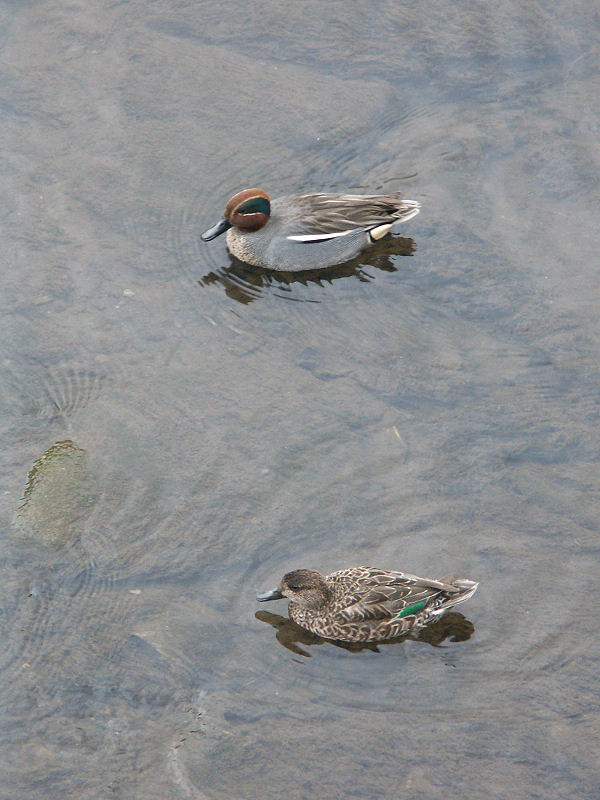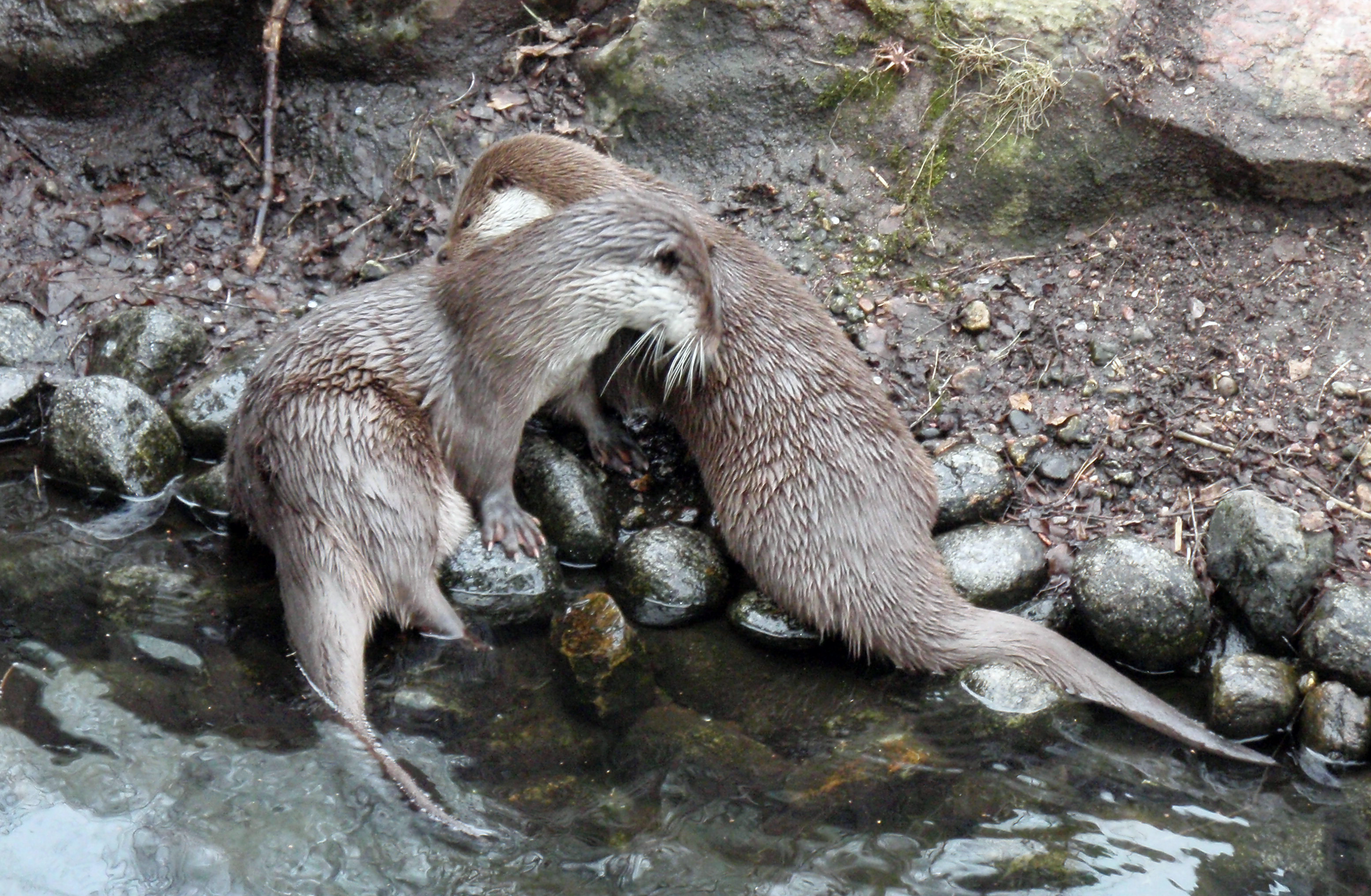|
Forêt D'Orient National Nature Reserve
The Forêt d'Orient (Orient Forest) National Nature Reserve (RNN154) is a National Nature Reserve (France), national nature reserve located in Champagne-Ardenne in the Grand Est region in France. Located within the Orient Forest Regional Natural Park, it was created in 2002 and protects 1,560 hectares of lake and forest areas. Localisation The territory of the nature reserve is located in Aube Departments of France, department in Communes of France, communes of Amance, Aube, Amance, Brévonnes, Mathaux, Piney, Aube, Piney and Radonvilliers within Orient Forest Regional Natural Park and 25 km east of Troyes. It includes part of the Orient, Amance and Temple lakes. History of site and reserve The EPTB Seine Grands Lacs, Great Seine Lakes were created from the 1960s to protect Paris from floods. Their completion in the 1990s allowed the establishment of peripheral natural environments linked to their presence. The protection of these environments was ensured by the creation of ... [...More Info...] [...Related Items...] OR: [Wikipedia] [Google] [Baidu] |
Orient Forest Regional Natural Park
Orient Forest Regional Natural Park ( French: ''Parc naturel régional de la Forêt d'Orient'') is a protected area of woodlands and lakes in the Champagne-Ardenne region of France. It covers a total area of The parkland encompasses the large Forêt d'Orient National Nature Reserve and three man-made lakes: Lac d'Orient, Lac du Temple and Lac Amance. The area was officially designated as a regional natural park in 1970. Member communes The park includes the following member communes: * Amance • Argançon • Assencières * Blaincourt-sur-Aube • Bossancourt • Bouranton • Brévonnes • Briel-sur-Barse • Brienne-la-Vieille • Brienne-le-Château * Champ-sur-Barse • Chauffour-lès-Bailly • Courteranges * Dienville • Dolancourt • Dosches * Épagne * Géraudot * Jessains • Juvanzé * Lassicourt • Laubressel • Lesmont • La Loge-aux-Chèvres • Lusigny-sur-Barse • Luyères * Magny-Fouchard • Maison-des-Champs Maison-des ... [...More Info...] [...Related Items...] OR: [Wikipedia] [Google] [Baidu] |
Eurasian Teal
The Eurasian teal (''Anas crecca''), common teal, or Eurasian green-winged teal is a common and widespread duck that breeds in temperate Eurosiberia and migrates south in winter. The Eurasian teal is often called simply the teal due to being the only one of these small dabbling ducks in much of its range. The bird gives its name to the blue-green colour teal. It is a highly gregarious duck outside the breeding season and can form large flocks. It is commonly found in sheltered wetlands and feeds on seeds and aquatic invertebrates. The North American green-winged teal (''A. carolinensis'') was formerly (and sometimes is still) considered a subspecies of ''A. crecca''. Taxonomy The Eurasian teal belongs to the "true" teals, a group of small ''Anas'' dabbling ducks closely related to the mallard (''A. platyrhynchos'') and its relatives; that latter group in fact seems to have evolved from a true teal. It forms a superspecies with the green-winged teal and the speckl ... [...More Info...] [...Related Items...] OR: [Wikipedia] [Google] [Baidu] |
Greylag Goose
The greylag goose (''Anser anser'') is a species of large goose in the waterfowl family Anatidae and the type species of the genus ''Anser (bird), Anser''. It has mottled and barred grey and white plumage and an orange beak and pink legs. A large bird, it measures between in length, with an average weight of . Its distribution is widespread, with birds from the north of its range in Europe and Asia often Bird migration, migrating southwards to spend the winter in warmer places, although many populations are resident, even in the north. It is the ancestor of most breeds of domestic goose, having been domesticated at least as early as 1360 BCE. The genus name and specific epithet are from ''anser'', the Latin for "goose". In the USA, its name has been spelled "graylag". Greylag geese travel to their northerly breeding grounds in spring, nesting on moorlands, in marshes, around lakes and on coastal islands. They normally mate for life and nest on the ground among vegetation. ... [...More Info...] [...Related Items...] OR: [Wikipedia] [Google] [Baidu] |
Greater White-fronted Goose
The greater white-fronted goose (''Anser albifrons'') is a species of goose, closely related to the smaller lesser white-fronted goose (''A. erythropus''). The greater white-fronted goose is Bird migration, migratory, breeding in northern Canada, Alaska, Greenland and Russia, and winters farther south in North America, Europe and Asia. It is named for the patch of white feathers bordering the base of its bill: ''albifrons'' comes from the Latin "white" and "forehead". In the United Kingdom and Ireland, it has been known as the white-fronted goose; in North America it is known as the greater white-fronted goose (or "greater whitefront"), and this name is also increasingly adopted internationally. Even more distinctive are the salt-and-pepper markings on the breast of adult birds, which is why the goose is colloquially called the "specklebelly" in North America. Description Greater white-fronted geese are in length, have a wingspan, and weigh . They have bright orange le ... [...More Info...] [...Related Items...] OR: [Wikipedia] [Google] [Baidu] |
Black Stork
The black stork (''Ciconia nigra'') is a large bird in the stork family Ciconiidae. It was first described by Carl Linnaeus in the 10th edition of his ''Systema Naturae''. Measuring on average from beak tip to end of tail with a wingspan, the adult black stork has mainly black plumage, with white underparts, long red legs and a long pointed red beak. A widespread but uncommon species, it breeds in scattered locations across Europe (predominantly in Portugal and Spain, and central and eastern parts), and east across the Palearctic to the Pacific Ocean. It is a long-distance migrant, with European populations wintering in tropical Sub-Saharan Africa, and Asian populations in the Indian subcontinent. When migrating between Europe and Africa, it avoids crossing broad expanses of the Mediterranean Sea and detours via the Levant in the east, the Strait of Sicily in the center, or the Strait of Gibraltar in the west. An isolated non-migratory population lives in Southern Africa. U ... [...More Info...] [...Related Items...] OR: [Wikipedia] [Google] [Baidu] |
Eurasian Otter
The Eurasian otter (''Lutra lutra''), also known as the European otter, Eurasian river otter, European river otter, common otter, and Old World otter, is a semiaquatic mammal native to Eurasia and the Maghreb. The most widely distributed member of the otter subfamily (Lutrinae) of the Mustelidae, weasel family (Mustelidae), it is found in the waterways and coasts of Europe, many parts of Asia, and parts of northern Africa. The Eurasian otter has a diet mainly of fish, and is strongly territorial. It is endangered in some parts of its range, but is recovering in others. Description The Eurasian otter is a typical species of the otter subfamily. Brown above and cream below, these long, slender creatures are well-equipped for their aquatic habits. Their bones show osteosclerosis, increasing their density to reduce buoyancy. This otter differs from the North American river otter by its shorter neck, broader visage, the greater space between the ears and its longer tail. However, the ... [...More Info...] [...Related Items...] OR: [Wikipedia] [Google] [Baidu] |
Barbastella
''Barbastella'' is a genus of vespertilionid bats. There are seven extant species in this genus Genus (; : genera ) is a taxonomic rank above species and below family (taxonomy), family as used in the biological classification of extant taxon, living and fossil organisms as well as Virus classification#ICTV classification, viruses. In bino ... and one only known from fossil remains. It comes from the Latin "Barba" (meaning "beard") and "Stella" (meaning "star"), and refers to the clusters of stiff hairs that some bats of this genus have around their nostrils, which may resemble a beard or, perhaps, the arrangement of the rays of a star. Furthermore, the term "barbastello" is common for bats in northeastern Italy, (especially Ferrara and Bologna). This regional use of Italian could have influenced or been related to the choice of the scientific name, and interestingly, the Italian term "barbastello" is also believed to have originated from the Latin "vespertilio" the classical t ... [...More Info...] [...Related Items...] OR: [Wikipedia] [Google] [Baidu] |
Wildcat
The wildcat is a species complex comprising two small wild cat species: the European wildcat (''Felis silvestris'') and the African wildcat (''F. lybica''). The European wildcat inhabits forests in Europe, Anatolia and the Caucasus, while the African wildcat inhabits semi- arid landscapes and steppes in Africa, the Arabian Peninsula, Central Asia, into western India and western China. The wildcat species differ in fur pattern, tail, and size: the European wildcat has long fur and a bushy tail with a rounded tip; the smaller African wildcat is more faintly striped, has short sandy-gray fur and a tapering tail; the Asiatic wildcat (''F. lybica ornata'') is spotted. The wildcat and the other members of the cat family had a common ancestor about 10–15 million years ago. The European wildcat evolved during the Cromerian Stage about 866,000 to 478,000 years ago; its direct ancestor was '' Felis lunensis''. The ''silvestris'' and ''lybica'' lineages probably diverged about 173 ... [...More Info...] [...Related Items...] OR: [Wikipedia] [Google] [Baidu] |
Mammal
A mammal () is a vertebrate animal of the Class (biology), class Mammalia (). Mammals are characterised by the presence of milk-producing mammary glands for feeding their young, a broad neocortex region of the brain, fur or hair, and three Evolution of mammalian auditory ossicles, middle ear bones. These characteristics distinguish them from reptiles and birds, from which their ancestors Genetic divergence, diverged in the Carboniferous Period over 300 million years ago. Around 6,640 Neontology#Extant taxon, extant species of mammals have been described and divided into 27 Order (biology), orders. The study of mammals is called mammalogy. The largest orders of mammals, by number of species, are the rodents, bats, and eulipotyphlans (including hedgehogs, Mole (animal), moles and shrews). The next three are the primates (including humans, monkeys and lemurs), the Artiodactyl, even-toed ungulates (including pigs, camels, and whales), and the Carnivora (including Felidae, ... [...More Info...] [...Related Items...] OR: [Wikipedia] [Google] [Baidu] |
Aquatic Plant
Aquatic plants, also referred to as hydrophytes, are vascular plants and Non-vascular plant, non-vascular plants that have adapted to live in aquatic ecosystem, aquatic environments (marine ecosystem, saltwater or freshwater ecosystem, freshwater). In lakes, rivers and wetlands, aquatic vegetations provide cover for aquatic animals such as fish, amphibians and aquatic insects, create substrate (marine biology), substrate for benthic invertebrates, produce oxygen via photosynthesis, and serve as food for some herbivorous wildlife. Familiar examples of aquatic plants include Nymphaeaceae, waterlily, Nelumbo, lotus, duckweeds, mosquito fern, floating heart, water milfoils, Hippuris, mare's tail, water lettuce, water hyacinth, and algae. Aquatic plants require special adaptation (biology), adaptations for prolonged inundation in water, and for buoyancy, floating at the water surface. The most common adaptation is the presence of lightweight internal packing cells, aerenchyma, but floa ... [...More Info...] [...Related Items...] OR: [Wikipedia] [Google] [Baidu] |
Hornbeam
Hornbeams are hardwood trees in the plant genus ''Carpinus'' in the family Betulaceae. Its species occur across much of the temperateness, temperate regions of the Northern Hemisphere. Common names The common English name ''hornbeam'' derives from the hardness of the woods (likened to Horn (anatomy), horn) and the Old English ''beam'', "tree" (cognate with Dutch ''Boom'' and German ''Baum''). The American hornbeam is also occasionally known as blue-beech, ironwood, or musclewood, the first from the resemblance of the bark to that of the American beech ''Fagus grandifolia'', the other two from the hardness of the wood and the muscled appearance of the trunk and limbs. The botanical name for the genus, ''Carpinus'', is the original Latin name for the European species, although some etymologists derive it from the Celtic for a yoke. Description Hornbeams are small, slow-growing, understory trees with a natural, rounded form growing tall and wide; the exemplar species—the ... [...More Info...] [...Related Items...] OR: [Wikipedia] [Google] [Baidu] |






